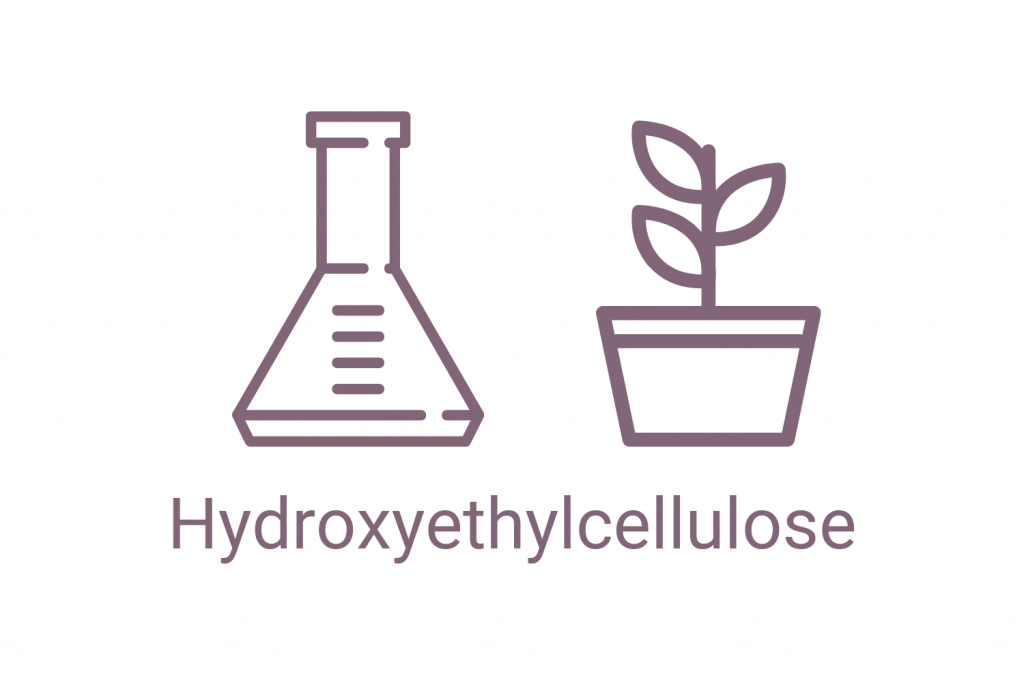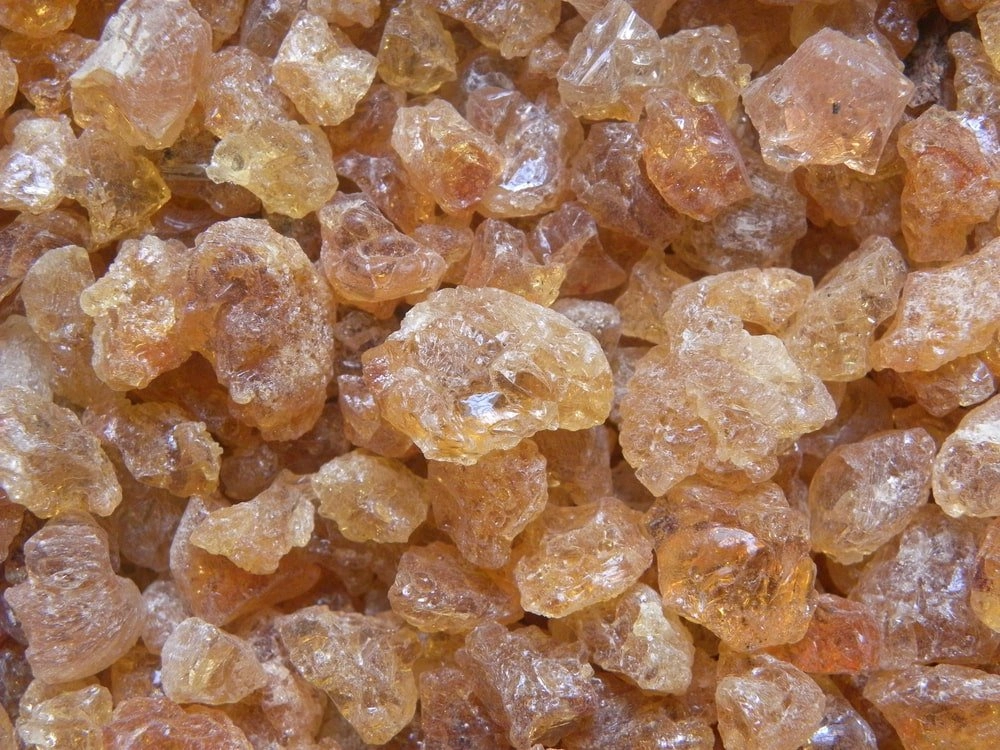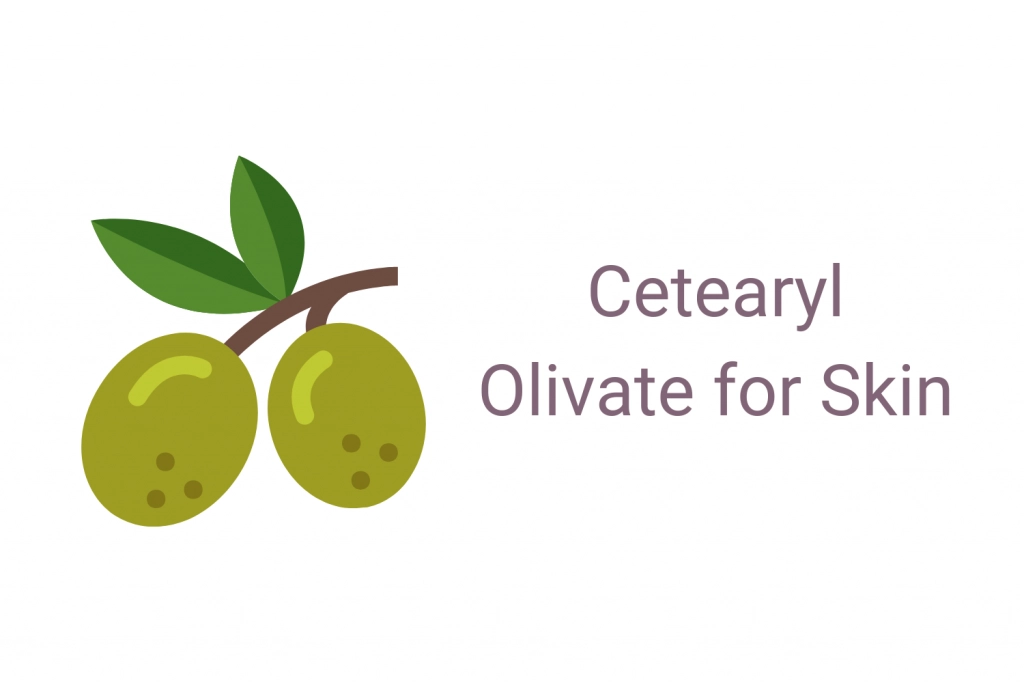Based on instinct you may want to run when you see an ingredient like Hydroxyethylcellulose in your skincare products. Even though this scary-looking seven-syllable word is hard to say, this ingredient is not going to hurt you.
This post may contain affiliate links. Read the full disclosure here
Hydroxyethylcellulose, or HEC, has been used in skin care products and cosmetics for decades. Despite the unfriendly name, hydroxyethylcellulose is considered safe to use for all skin types. It’s useful in products for binding, thickening, and as an emulsifier.
In this ingredient overview, you’ll learn about its benefits and common uses.
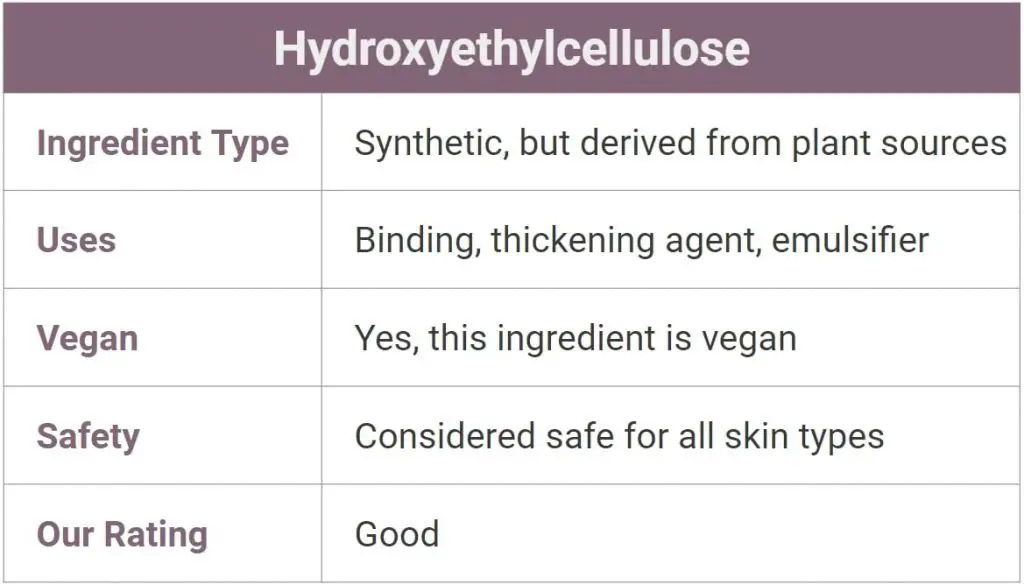
What Is Hydroxyethylcellulose?
Hydroxyethylcellulose is an ingredient used in skincare, cosmetics, and shampoo products including lotions, mascara, masks, and serums. It’s a smooth, gel-like substance that easily dissolves in water. This white, odorless powder has pH levels that range from 6.0 – 8.5 depending on the concentration.
This compound is derived from cellulose, a natural polymer that is common in almost all vegetation and plant matter. Cellulose is processed by a lab to change its chemical composition, resulting in a transparent gel known as hydroxyethylcellulose. It is produced commercially by combining cellulose sodium hydroxide and propylene oxide.
While popular in skincare, it is also used in industrial applications like oil drilling, to create paints and other coatings, and even to help with the digestion of certain drugs that are taken orally.
You may also be wondering if Hydroxyethylcellulose is a silicone. The short answer is no, Hydroxyethylcellulose is not a silicon-based ingredient. If you are looking to avoid silicone ingredients, stay away from ingredients ending in “cone” or “siloxane.” The most common silicone ingredients are dimethicone, cyclomethicone, cyclohexasiloxane, cetearyl methicone, and cyclopentasiloxane.
What Are The Benefits & Uses?
Hydroxyethylcellulose is a texture enhancer. This ingredient isn’t added to products for it’s direct benefits to the skin but it can help products be more effective. As a emulsifier, it helps ingredients mix better to help avoid separation. It is also a thickening agent which can help products have their desired texture and thickness, which can make them easier to use.
Hydroxyethylcellulose is often compared to Xanthan Gum, which is another commonly used thickening agent in skincare and food. It also offers similar benefits as acacia senegal gum, a natural gum used to thicken ingredients.
- Binding agent and emulsifier – Hydroxyethylcellulose can help stabilize different ingredients in creams, lotions, shampoos, and other cosmetic care products. It can help bind water and oil together, for example, creating a stable emulsion for a skincare cream or other product. Along with other binders and emulsifiers, it helps create a consistent texture that won’t split or separate after manufacturing. It helps products from separating over time.
- Thickener to increase viscosity – This is the primary purpose of hydroxyethylcellulose, it can dramatically increase the viscosity of products and thicken them. This is great for lotions and creams to help them spread evenly across the skin, and absorb into the skin properly.
- Film former – Hydroxyethylcellulose is also a powerful film former. This means that it helps products like lotion create a smooth, cohesive, and continuous layer across your skin, which leaves it feeling silky and soft.
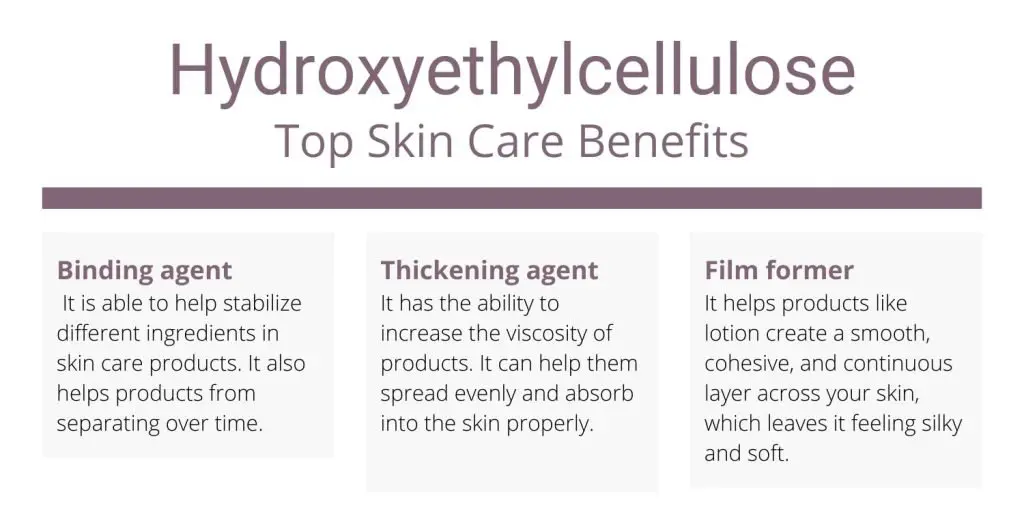
Is Hydroxyethylcellulose Vegan?
Yes. This compound is derived from cellulose, which is one of the primary components of almost every plant on earth, from cotton to trees, shrubs, algae, and even some kinds of fungus.
Hydroxyethylcellulose is obtained by processing cellulose in a laboratory using specialized equipment and techniques, so it’s completely vegan and safe to use if you prefer cruelty-free products.
As always, we recommend you consult the ingredients list for any product you buy carefully. Many products with hydroxyethylcellulose may also contain animal-derived ingredients. Unless a product is specifically marketed as vegan, this is always a possibility.
Is Hydroxyethylcellulose Safe In Skincare?
According to the Cosmetic Ingredient Review, hydroxyethylcellulose is considered safe to use in skincare products and cosmetics. There are no known adverse effects of hydroxyethylcellulose in skincare.
You don’t have to worry about this ingredient in your favorite skincare products. While it doesn’t offer direct benefits to the skin it can improve product texture making them easier and more enjoyable to use. In some cases, this can improve the effectiveness of the product as well. Hydroxyethylcellulose helps you have access to smooth, creamy products without the use of silicone or other less desired ingredients.
Frequently Asked Questions
Find answers to some of the most frequently asked questions about hydroxyethylcellulose.
Also Known As:
Hydroxyethylcellulose is also sometimes called “Natrosol,” which is a brand name for this ingredient. Other common names for this compound include HEC, hydroxyethyl ether, 2-Hydroxyethyl cellulose, Cellosize, Hyetellose, and cellulose.
Related Texture Enhancing Skincare Ingredients:
- Carrageenan
- Cocamidopropyl Dimethylamine
- Cocamidopropyl Hydroxysultaine
- Xanthan Gum
- Zea Mays (Corn) Starch
- Isoamyl Laurate
- Polymethylsilsesquioxane
References
- CIR (Cosmetic Ingredient Review). 2009
- https://pubs.acs.org/doi/abs/10.1021/ma00030a016

